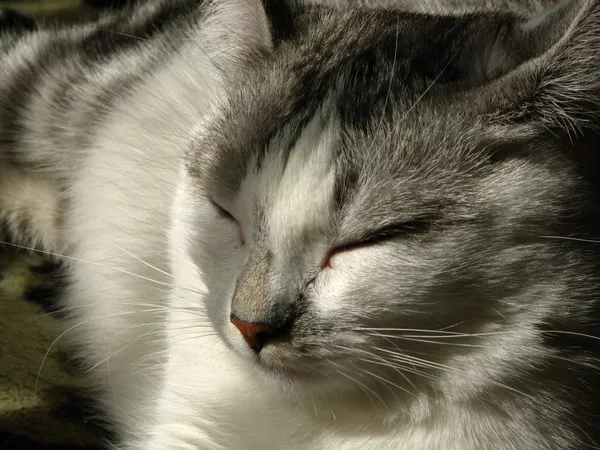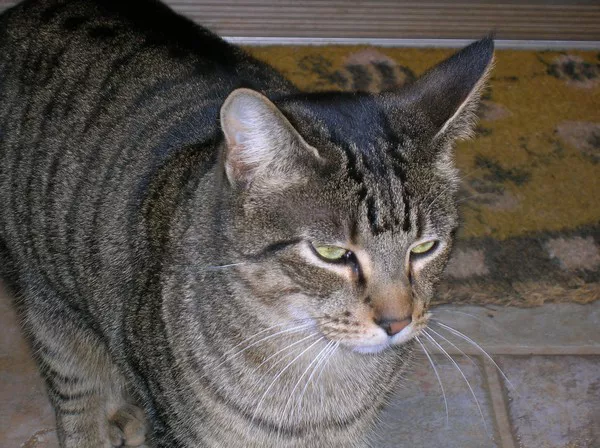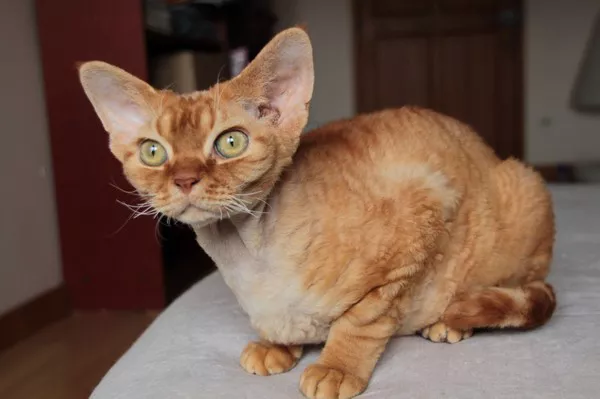Cats, beloved companions in many households, are not immune to experiencing pain due to various reasons, such as injuries, surgeries, or underlying health conditions. Recognizing signs of pain in felines and understanding safe and effective pain management strategies is crucial for ensuring their well-being. In this in-depth article, we explore the complexities of feline pain, delve into common causes, and provide a comprehensive guide on what can be safely administered to alleviate pain in cats.
Identifying Pain in Cats:
Cats are known for their stoic nature, often concealing signs of discomfort. Recognizing subtle changes in behavior, appetite, and mobility can aid in early identification of pain in felines.
Behavioral Changes:
Cats in pain may exhibit behavioral alterations, such as increased aggression, vocalization, or withdrawal. Changes in grooming habits, reluctance to play, or altered sleep patterns can also indicate underlying discomfort.
Appetite and Eating Habits:
Pain can affect a cat‘s appetite and eating habits. Decreased food intake, reluctance to eat, or changes in chewing patterns may signal pain in the oral or gastrointestinal regions.
Mobility Issues:
Cats experiencing pain may show reluctance to jump, climb, or engage in physical activities. Limping, stiffness, or an altered gait are physical signs that warrant attention.
Changes in Vocalization:
Excessive vocalization or unusual vocal patterns, such as yowling or growling, may indicate pain. Cats may use vocal cues to express discomfort.
Litter Box Changes:
Painful urination or defecation may lead to changes in litter box behavior. Straining, vocalizing during elimination, or avoiding the litter box altogether can be indicative of pain.
Common Causes of Pain in Cats:
Understanding the potential causes of pain in cats is fundamental to addressing their discomfort effectively. Common triggers include medical conditions, injuries, and post-surgical recovery.
Dental Issues:
Dental problems, such as periodontal disease, tooth decay, or oral infections, can cause significant pain in cats. Symptoms may include difficulty eating, drooling, and pawing at the mouth.
Arthritis and Joint Pain:
Arthritis, a common condition in aging cats, can result in chronic joint pain. Cats with arthritis may exhibit stiffness, lameness, and a reluctance to engage in physical activities.
Trauma and Injuries:
Accidents, falls, or fights with other animals can lead to injuries and acute pain in cats. Visible wounds, limping, or signs of distress should prompt immediate veterinary attention.
Post-Surgical Discomfort:
Cats undergoing surgical procedures may experience postoperative pain. Adequate pain management is essential to ensure a smooth recovery and minimize discomfort.
Urinary Tract Issues:
Conditions such as urinary tract infections (UTIs) or the presence of urinary stones can cause pain during urination. Cats may exhibit distress while using the litter box.
Veterinary Assessment and Diagnosis:
Proper diagnosis of the underlying cause of pain in cats requires a thorough veterinary examination. Veterinarians employ various diagnostic tools and procedures to identify the source of discomfort and tailor treatment plans accordingly.
Physical Examination:
A comprehensive physical examination allows veterinarians to assess a cat’s overall health, mobility, and specific areas of discomfort. Palpation of joints, examination of the mouth, and observation of behavior contribute to the diagnostic process.
Diagnostic Imaging:
Radiographs (X-rays), ultrasound, and other imaging techniques may be employed to visualize internal structures, identify abnormalities, and assess the extent of injuries or conditions affecting bones and organs.
Laboratory Tests:
Blood tests, urine analysis, and other laboratory assessments aid in diagnosing systemic conditions, infections, or metabolic disorders that may contribute to feline pain.
Pain Scoring Systems:
Veterinary professionals utilize pain scoring systems to objectively assess and quantify a cat’s pain level. These systems consider various indicators, such as behavior, vocalization, and physiological parameters.
9 Pain Management Strategies for Cats:
Once the cause of pain is identified, veterinarians can recommend appropriate pain management strategies tailored to the specific needs of each cat. It is crucial to follow veterinary guidance and avoid self-medicating cats, as certain medications can be harmful or even toxic to felines.
1. Non-Steroidal Anti-Inflammatory Drugs (NSAIDs):
NSAIDs, such as meloxicam or carprofen, are commonly prescribed to alleviate pain and reduce inflammation in cats with conditions like arthritis. Veterinary supervision is essential, as misuse can lead to adverse effects.
2. Opioids:
Opioid medications, such as buprenorphine, are used for managing moderate to severe pain, particularly after surgeries. Veterinarians carefully determine the appropriate dosage and duration to prevent potential side effects.
3. Gabapentin:
Gabapentin is a medication that can be prescribed for neuropathic pain or conditions causing nerve discomfort. It is often used in conjunction with other pain management strategies.
4. Corticosteroids:
Corticosteroids may be recommended to address inflammatory conditions causing pain. These medications require careful monitoring due to potential side effects.
5. Joint Supplements:
Nutraceuticals, such as glucosamine and chondroitin sulfate, are used to support joint health and may benefit cats with arthritis. Veterinary consultation is necessary to determine the appropriate supplementation.
6. Physical Therapy:
Physical therapy and rehabilitation techniques, including massage, stretching, and gentle exercises, can aid in managing pain and improving mobility, particularly in cats with arthritis or injuries.
7. Environmental Modifications:
Creating a cat-friendly environment that accommodates mobility challenges can contribute to pain management. Providing comfortable bedding, easy access to food and water, and minimizing obstacles can enhance a cat’s well-being.
8. Weight Management:
Maintaining a healthy weight is crucial for cats with arthritis or joint issues. Weight management strategies, including controlled diets and regular exercise, can alleviate stress on joints.
9. Behavioral Enrichment:
Engaging in interactive play, providing stimulating toys, and creating an enriched environment can distract cats from pain and contribute to their overall mental well-being.
Alternative Therapies for Feline Pain:
In addition to conventional medications and interventions, several alternative therapies may complement pain management in cats. These therapies, when used under veterinary guidance, aim to enhance overall comfort and well-being.
Acupuncture:
Acupuncture involves the insertion of thin needles into specific points on a cat’s body to stimulate natural healing processes. It is believed to promote pain relief and improve energy flow.
Laser Therapy:
Low-level laser therapy (LLLT) uses focused light to stimulate cell regeneration and reduce inflammation. It can be employed to alleviate pain in cats with musculoskeletal conditions.
Physical Modalities:
Therapeutic techniques, such as heat or cold therapy, may be recommended to manage pain and inflammation in specific areas. These modalities require careful application to prevent injury.
Herbal Remedies:
Some herbal supplements, such as turmeric or devil’s claw, are believed to have anti-inflammatory properties and may be explored as complementary options. However, their use should be discussed with a veterinarian.
CBD Oil:
Cannabidiol (CBD) oil is gaining popularity for its potential anti-inflammatory and analgesic properties. When considering CBD for cats, it is crucial to choose products specifically formulated for feline use and consult with a veterinarian.
Safely Administering Medications to Cats:
Administering medications to cats can be challenging, and improper dosages or methods may lead to complications. Understanding the proper techniques for giving medications ensures the well-being of the feline patient.
Oral Medications:
For oral medications, such as pills or liquid formulations, gently restrain the cat and use a pill dispenser or syringe to administer the medication. Placing the medication in a treat or using flavored formulations can enhance acceptance.
Topical Medications:
Topical medications, including gels or patches, may be applied to specific areas of the cat’s body. Follow veterinary instructions regarding application frequency and potential side effects.
Injections:
Injectable medications, such as subcutaneous fluids or pain-relieving injections, may be administered by a veterinarian or trained professional. Avoid self-administration without proper training.
Transdermal Patches:
Transdermal patches deliver medication through the skin. Placement on hairless areas, such as the inner ear, ensures absorption. However, not all medications are suitable for transdermal delivery.
Addressing Pain in Specific Conditions:
Different medical conditions may require tailored approaches to pain management in cats. Understanding the nuances of managing pain in specific scenarios enhances the effectiveness of interventions.
Dental Pain:
Dental pain may necessitate dental procedures, such as extractions or cleanings, to address the underlying issue. Pain management may include dental medications and analgesics.
Arthritis Management:
Cats with arthritis benefit from a multifaceted approach, including medications, joint supplements, weight management, and environmental modifications. Regular veterinary check-ups are essential for monitoring progress.
Post-Surgical Pain:
Post-surgical pain management is crucial for ensuring a smooth recovery. Veterinarians may prescribe pain medications and provide guidance on monitoring the cat’s comfort during the healing process.
Chronic Conditions:
Chronic conditions, such as inflammatory bowel disease (IBD) or chronic kidney disease (CKD), may require long-term pain management strategies. Consistent veterinary oversight is vital for adjusting treatment plans as needed.
Risks and Considerations in Feline Pain Management:
While addressing pain in cats is paramount, it is essential to be aware of potential risks and considerations associated with certain pain management strategies.
Medication Side Effects:
Common pain medications may have side effects in cats, including gastrointestinal upset, kidney or liver issues, or allergic reactions. Close monitoring and veterinary guidance help mitigate these risks.
Toxicity Concerns:
Some medications that are safe for humans or other animals can be toxic to cats. Avoid self-medicating cats and consult with a veterinarian before administering any over-the-counter or prescription medications.
Individual Variability:
Cats exhibit individual variability in their response to pain and medications. Adjustments to dosages or treatment plans may be necessary based on the cat’s unique needs and tolerances.
Underlying Health Conditions:
Pain management plans must consider any underlying health conditions the cat may have. Certain medications may interact with pre-existing conditions, requiring careful evaluation by a veterinarian.
Holistic Approaches to Feline Well-Being:
Promoting overall well-being in cats extends beyond pain management alone. Holistic approaches that encompass nutrition, mental stimulation, and preventive care contribute to a cat’s quality of life.
Balanced Nutrition:
Providing a well-balanced and species-appropriate diet is essential for overall health. Nutrition plays a role in maintaining weight, supporting the immune system, and promoting joint health.
Environmental Enrichment:
Creating an enriched environment with stimulating toys, scratching posts, and climbing structures fosters mental and physical well-being. Environmental enrichment can distract cats from pain and prevent boredom.
Regular Veterinary Check-Ups:
Routine veterinary examinations are crucial for detecting potential health issues early on. Regular check-ups allow veterinarians to assess a cat’s overall health and adjust pain management strategies as needed.
Preventive Care:
Preventive measures, such as vaccinations, parasite control, and dental care, contribute to overall feline health. Addressing potential health issues proactively reduces the risk of pain and discomfort.
Conclusion:
Navigating feline pain management requires a thoughtful and compassionate approach, considering the unique needs and sensitivities of each cat. From identifying subtle signs of discomfort to implementing tailored pain management strategies, cat owners play a crucial role in ensuring the well-being of their feline companions. Collaborating with veterinary professionals, staying informed about safe medications, and embracing holistic approaches contribute to a comprehensive and effective plan for alleviating pain in cats. As we strive to provide the best possible care for our feline friends, a commitment to their comfort and quality of life remains at the forefront of responsible pet ownership.



























